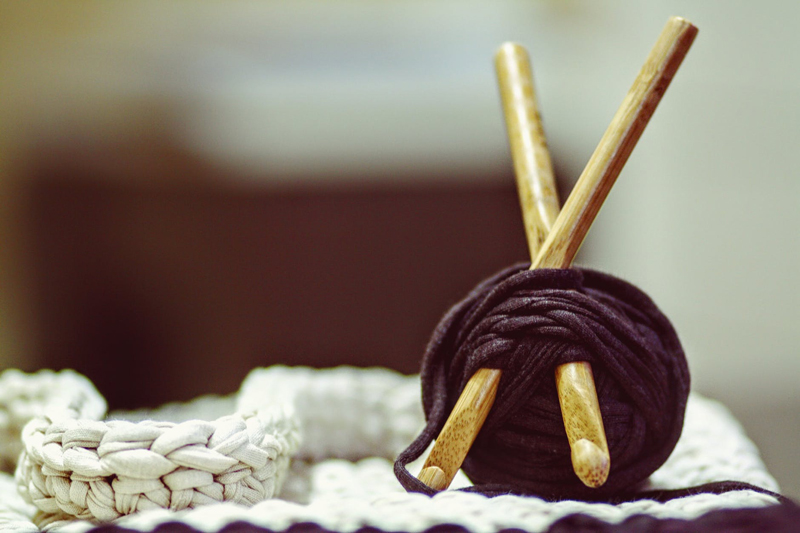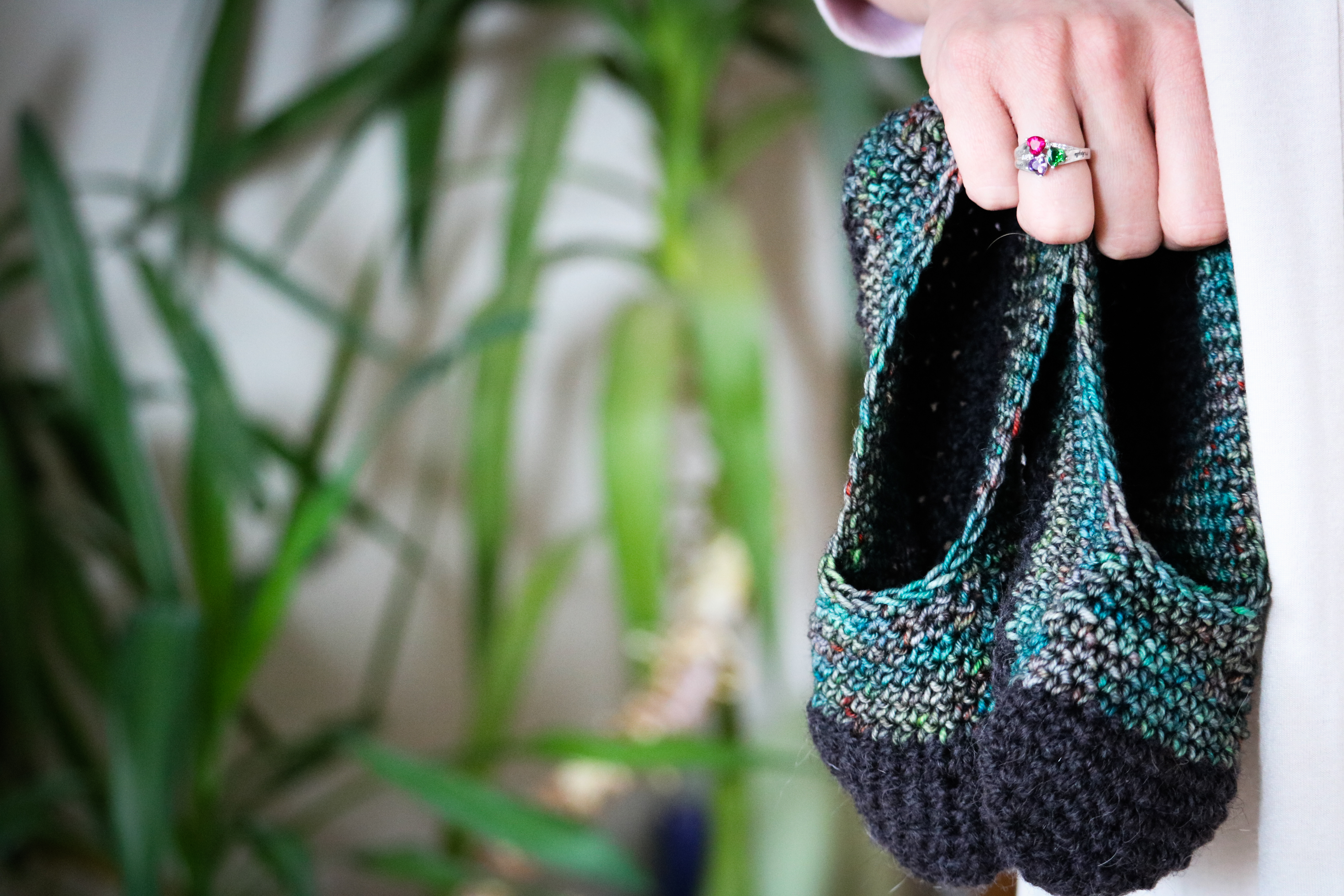Blocking Boards

One vivid memory I have from my childhood is taking the crocheted doilies, tablecloths, and other items made by my Grandmother, to a woman who lived nearby. It was there that the limp and lifeless items were brought to life, or in other words, were starched and blocked. Today, it is difficult, if not impossible to find someone who has the knowledge and skills to do the job and very few crochet resources even mention starching and blocking. In fact, some resources state that stretching should not be done. As for me, I want my crocheted doilies and tablecloths to have at least a little body and my snowflakes, bells, and baskets to be stiff enough to support their own weight.
In the old days, the larger crocheted items such as bedspreads, curtains, and tablecloths were starched and stretched on curtain stretchers. These wooden frames were adjustable, for different sizes and had small nails or tacks evenly spaced around the interior edges. The frame was set up to accommodate the finished size of the crocheted item, which was then starched and stretched over the tacks until the item was thoroughly dry. Although I haven’t located a source for buying new curtain stretchers, I periodically find them at antique stores, ranging in price from $7.00 to $75.00.
Another option for blocking large items is to use Styrofoam. Make sure the Styrofoam is large enough to accommodate the width and length of the finished item. I find that supporting the Styrofoam on my dining room table works well for most items, but you could also place it on the floor if you do not have a table that’s big enough. To insure that blocking is even and straight, I lay clear contact paper on top of the Styrofoam with the paper still attached to the sticky side of the contact paper. The reason for this is that the paper has a one-inch grid printed on it, which is very helpful for accurate pinning, while the plastic contact paper protects the Styrofoam from getting wet damp. After blocking, the contact paper can be cleaned with a damp cloth, rolled up, and stored until the next item is blocked.
Smaller items can also be stretched on Styrofoam covered with contact paper or a quilter’s board can be used. These padded, muslin covered boards are ideal for blocking a wide variety of small crocheted projects. The muslin is printed with a one-inch grid, and most boards also have circles printed on them in graduated sizes. I generally cover the board with clear plastic wrap before blocking in order to keep the muslin clean and to prevent a buildup of dried starch. Many fabric, craft, and quilting stores carry these boards.
Ironing boards can also be used for blocking very small items, and can be done quite accurately if the ironing board cover has a printed grid on it. If not, the contact paper grid can be laid on top of the ironing board.
The real advantage of using Styrofoam, quilter’s boards, or a well-padded ironing board is that pins used to hold the crocheted item in place will stay in place until the item is dry. If the padding isn’t thick enough, the pins won’t hold and the crocheted item will not retain the desired shape during the drying process.
While some crocheters use towels for blocking, this is the least desirable option. It requires a lot of towels to get the thickness needed to hold the pins firmly in place, the pinning surface is not very smooth, and it will require a lot more time measuring or making templates to use to insure accurate and even dimensions of the finished item.
Finally, be sure to use stainless steel pins when blocking crocheted items. Whether you use steam or starch to block crocheted items, the dampness of the item will rust pins that aren’t made of stainless steel. It’s becoming increasingly more difficult to find stainless steel pins, so be sure to read the label before you purchase new pins for blocking.
In the old days, the larger crocheted items such as bedspreads, curtains, and tablecloths were starched and stretched on curtain stretchers. These wooden frames were adjustable, for different sizes and had small nails or tacks evenly spaced around the interior edges. The frame was set up to accommodate the finished size of the crocheted item, which was then starched and stretched over the tacks until the item was thoroughly dry. Although I haven’t located a source for buying new curtain stretchers, I periodically find them at antique stores, ranging in price from $7.00 to $75.00.
Another option for blocking large items is to use Styrofoam. Make sure the Styrofoam is large enough to accommodate the width and length of the finished item. I find that supporting the Styrofoam on my dining room table works well for most items, but you could also place it on the floor if you do not have a table that’s big enough. To insure that blocking is even and straight, I lay clear contact paper on top of the Styrofoam with the paper still attached to the sticky side of the contact paper. The reason for this is that the paper has a one-inch grid printed on it, which is very helpful for accurate pinning, while the plastic contact paper protects the Styrofoam from getting wet damp. After blocking, the contact paper can be cleaned with a damp cloth, rolled up, and stored until the next item is blocked.
Smaller items can also be stretched on Styrofoam covered with contact paper or a quilter’s board can be used. These padded, muslin covered boards are ideal for blocking a wide variety of small crocheted projects. The muslin is printed with a one-inch grid, and most boards also have circles printed on them in graduated sizes. I generally cover the board with clear plastic wrap before blocking in order to keep the muslin clean and to prevent a buildup of dried starch. Many fabric, craft, and quilting stores carry these boards.
Ironing boards can also be used for blocking very small items, and can be done quite accurately if the ironing board cover has a printed grid on it. If not, the contact paper grid can be laid on top of the ironing board.
The real advantage of using Styrofoam, quilter’s boards, or a well-padded ironing board is that pins used to hold the crocheted item in place will stay in place until the item is dry. If the padding isn’t thick enough, the pins won’t hold and the crocheted item will not retain the desired shape during the drying process.
While some crocheters use towels for blocking, this is the least desirable option. It requires a lot of towels to get the thickness needed to hold the pins firmly in place, the pinning surface is not very smooth, and it will require a lot more time measuring or making templates to use to insure accurate and even dimensions of the finished item.
Finally, be sure to use stainless steel pins when blocking crocheted items. Whether you use steam or starch to block crocheted items, the dampness of the item will rust pins that aren’t made of stainless steel. It’s becoming increasingly more difficult to find stainless steel pins, so be sure to read the label before you purchase new pins for blocking.

Related Articles
Editor's Picks Articles
Top Ten Articles
Previous Features
Site Map
Content copyright © 2023 by Judy Wolniakowski. All rights reserved.
This content was written by Judy Wolniakowski. If you wish to use this content in any manner, you need written permission. Contact Holly Messenger Aamot for details.




